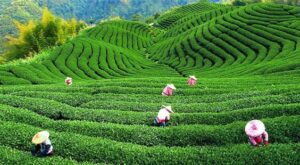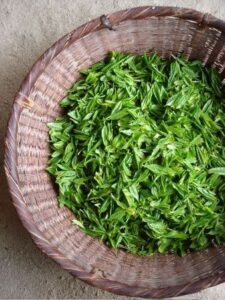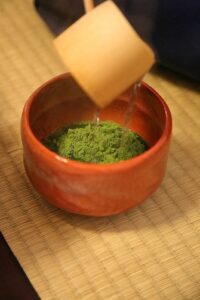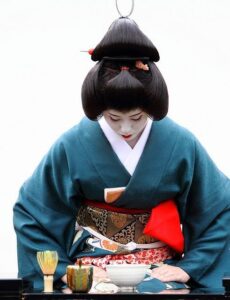
The origins of green tea trace back to Emperor Shen Nong, an esteemed herbalist known for his emphasis on cleanliness. He exclusively consumed boiled water, and one day, while resting beneath a tea tree, a leaf fell into his pot. Upon tasting the infusion, he felt rejuvenated and refreshed. This serendipitous discovery led to the cultivation of green tea by villagers, who began enhancing its flavor with spices and flowers. Initially, all tea in China was green, and its production involved steaming and drying. However, the tea’s flavor deteriorated quickly, prompting the development of fermentation techniques in the 17th century, which resulted in the creation of oolong and black teas.
The introduction of tea to Japan occurred during the early Heian period, coinciding with cultural and religious exchanges with China. Japanese monks traveling to China for studies brought back tea seeds and knowledge about herbal practices. A monk from Aichi Prefecture notably presented pressed tea and seeds to the emperor during a temple visit, leaving him impressed with the flavor. This moment marked the beginning of tea cultivation in Japan, initially popular among the aristocracy, particularly in the Kyoto region.
In the early Kamakura period, Zen Buddhist priests returned from China with a wealth of tea seeds and knowledge of tea production methods. They introduced a unique technique of grinding tea leaves using stone mortars, which preserved the delicate flavor and aroma, resulting in a fine powder known as matcha. The labor-intensive process of creating matcha contributes to its higher price compared to other green teas. Brewing matcha requires a specialized technique using a tea whisk to create a smooth, frothy beverage.
As tea cultivation spread, its medicinal properties began to gain recognition. Historical texts highlight tea’s role as a foundation for mental clarity and a potent herbal remedy, enhancing overall well-being and vitality. Notably, Shogun Minamoto Sanemoto experienced relief from symptoms related to heavy drinking after consuming tea, prompting the dissemination of tea knowledge across Japan by traveling priests. Over time, tea became integrated into various rituals and was recognized for its therapeutic benefits.
During the Muromachi period, the Japanese tea ceremony, known as Chanoyu, emerged. This period saw a fusion of aesthetics, philosophy, and the natural world in tea brewing practices. Tea vessels became more intricately designed, and the simplicity and mindfulness associated with Zen practices influenced the tea-drinking experience. Priests established small tea ceremony rooms to facilitate these contemplative rituals, leading to the development of the traditional Japanese tea ceremony as we recognize it today.
In the Edo period, tea ceremonies expanded to include the lower classes, though high-quality tea was reserved for the samurai class at the start of the year, with commoners often receiving lower-grade tea harvested later. As societal structures evolved, these class distinctions gradually diminished, allowing the tradition of the tea ceremony to flourish. Beyond its ceremonial significance, the practice fosters mindfulness and introspection, with many schools in Japan teaching this cultural tradition to children.
The journey of matcha from its historical roots to its current status highlights the cultural richness and enduring significance of tea in Japan.
Source:
http://fineartamerica.com/featured/oolong-tea-bud-jung-pang-wu.html
https://moyamatcha.com/en/moya-matcha/history-of-matcha/#
http://d.hatena.ne.jp/keibunsha2/20110508
https://www.pinterest.com/pin/339951471845392656/
https://www.flickr.com/photos/aligatorpics/6240407574/in/photostream/
http://japan-web-magazine.com/japanese-tea/japan-japanese-tea-ceremony0.html
https://traditional-japan.tumblr.com/image/153431720372
shorturl.at/brstQ
บทความจาก : Fuwafuwa




